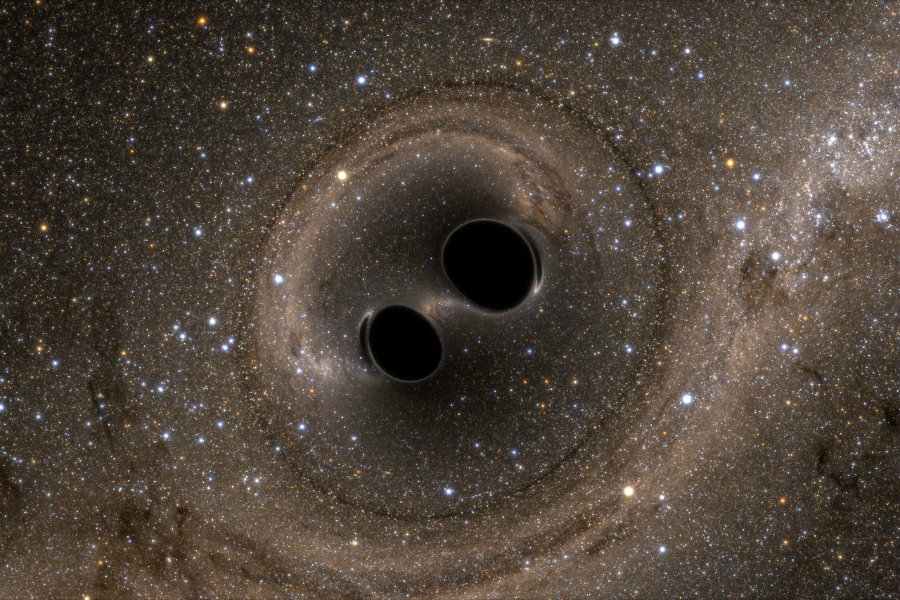A collision between two black holes that took place more than 10,000 billion miles away from Earth sent shock waves through space and time. After nearly 2 billion years, the effects of the violent event have reached the blue planet, and the gravitational waves were detected on 14 August 2017, by three susceptible instruments called LIGO Scientific Collaboration and Virgo collaboration.
One hole was 31 solar masses, and the other was 25 times the mass of our Sun, as an international team of scientists mentioned Wednesday during the announcement of the discovery at a meeting of the G7 science ministers in Turin, Italy. The binary black hole system formed a single 53-solar-mass spinning hole as the two components twisted together. Gravitational waves were expelled as the missing three sun’s worth of mass became energy.
These cataclysm events also happen as a result of the explosion of giant stars and the collision between neutron stars or supernovas. Unlike these kinds of gravitational wave sources, black holes cannot be observed through conventional telescopes because they don’t emit light or radiation.

A long-studied theory is finally confirmed
Gravitational wave detectors located in Washington State and Louisiana are the L-shaped instruments that makeup LIGO, which has recently partnered with the Virgo detector near Pisa, Italy. These highly precise machines allowed scientists to find that the cosmic event was located in the direction of the constellation Eridanus.
David Shoemaker is the spokesman for LIGO and research scientist of the Massachusetts Institute of Technology. He explained at Wednesday’s conference how the team worked their way up the three “legs” to discover the location of the event as one would do to find the camera on a tripod by looking at the place where its legs meet.
The international team of scientists is relying on operations in the United States and Italy to investigate Einstein’s Theory of General Relativity. The latest discoveries had confirmed what he predicted a century ago when he said gravitational waves should exist.
Since 1916, the warping effect had remained just that, a prediction. But in September 2015, the LIGO Scientific Collaboration detected the first sign that the German physicist was right. After the addition of the Virgo detector, August’s event marked the fourth discovery of black hole collisions and the first made by all three sensors.

A three-detector network provides more accurate results
Shelia Rowan of Glasgow University, UK, told BBC News that the team was now able to understand the origin and evolution of black holes better.
“LIGO and Virgo are the most sensitive instruments ever built by mankind,” said Jo van den Brand, a physicist, and Virgo Collaboration spokesman, as reported by The Washington Post.
Unlike conventional telescopes, these instruments hear shockwaves as a cosmic chirp, which is a spike in frequency. Although the Virgo detector is less sensitive than the LIGO instruments, its addition to the network allows scientists to track the origin of the cosmic events more accurately.
Gabriela González, the former spokeswoman for the LIGO team, said the system helps scientists to more precisely locate where a gravitational wave came from, as reported by The Washington Post. The professor of physics and astronomy at Louisiana State University affirm.
Source: CNN
